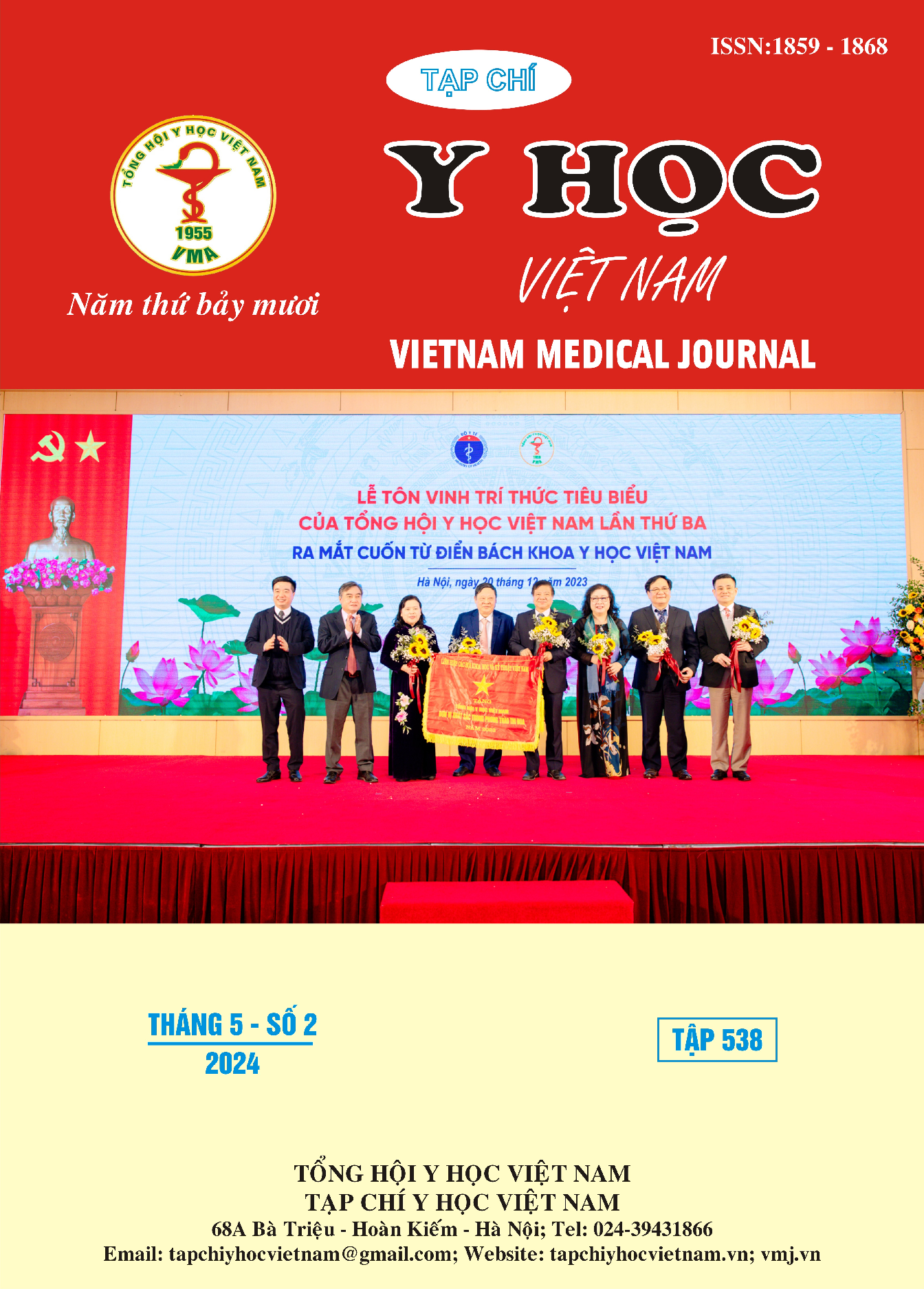HLA COMPATIBILITY CHARACTERISTICS OF CASES WITH ALLOGENEIC STEM CELL TRANSPLANTATION USING MOBILIZED PERIPHERAL BLOOD AT NATIONAL INSTITUTE OF HEMATOLOGY AND BLOOD TRANSFUSION (2014-2022)
Main Article Content
Abstract
Background: Stem cells from an HLA-mismatched donor are applied for patients who can not find an HLA-matched stem cell source. Objective: To analyze HLA compatibility characteristics in cases with allogeneic stem cell transplantation using peripheral blood stem cells to treat some hematological diseases and some post-transplant results at the National Institute of Hematology and Blood Transfusion in 2014-2022. Subjects: 176 allogeneic stem cell transplant cases at the National Institute of Hematology and Blood Transfusion in 2014-2022. Method: retrospective, longitudinal descriptive study. Results: Among 176 allogeneic stem cell transplants, patients transplanted from HLA-mismatched peripheral blood stem cells sources accounted for 30.1% (in 2020-2022, 39.1%); 37.6% of those cases are for malignant diseases, of which 5 loci mismatched cases accounted for the highest percentage (14.8%); the mortality rate after stem cell transplantation with HLA-mismatched sources accounted for 35.8%, higher than the HLA-matched group (29.3%); survival rate after transplantation were as followed: HLA-matched (70.7%) and 5 loci HLA-mismatched (75%), there was not much difference in survival rate after 1 locus mismatch and 2-to-4 loci mismatch transplantations (55.6% and 55%). Conclusions: Initial results showed the effectiveness of HLA-mismatched allogeneic stem cell transplantation from peripheral blood in supporting patient treatment.
Article Details
Keywords
allogeneic stem cell transplant, HLA - mismatched, hematopoietic stem cell transplantation.
References
2. Meerim Park 1, Jong Jin Seo (2012). Role of HLA in Hematopoietic Stem Cell Transplantation. Bone Marrow Res. 2012:2012:680841. doi: 10.1155/2012/680841. Epub 2012 Oct 2.
3. N. Flomenberg, L. A. Baxter-Lowe, D. Confer et al. (2004). Impact of HLA class I and class II high-resolution matching on outcomes of unrelated donor bone marrow transplantation: HLA-C mismatching is associated with a strong adverse effect on transplantation outcome. Blood, 104 (7):1923–1930.
4. Prof Alois Gratwohl, Marcelo C Pasquini, MD, Prof Mahmoud Aljurf, MD, Yoshiko Atsuta, MD, Helen Baldomero, BMS, Lydia Foeken, MD, et al. (2015). One million haemopoietic stem-cell transplants: a retrospective observational study. Lancet Haematol, 2(3): 91-100.
5. Ruxiu Tie, Tiansong Zhang, Bo Yang, Huarui Fu, Biqing Han, Jian Yu, Yamin Tan, and He Huang (2017). Clinical implications of HLA locus mismatching in unrelated donor hematopoietic cell transplantation: a meta-analysis. Oncotarget 2017 Apr 18; 8(16): 27645–27660.
6. Stephanie J Lee et al. (2007). High-resolution donor-recipient HLA matching contributes to the success of unrelated donor marrow transplantation. Blood, 110 (13): 4576–4583.
7. Scott R. Solomon et al. (2020). Class II HLA mismatch improves outcomes following haploidentical transplantation with posttransplant cyclophosphamide. Blood Adv. 2020 Oct 27; 4(20): 5311–5321.


